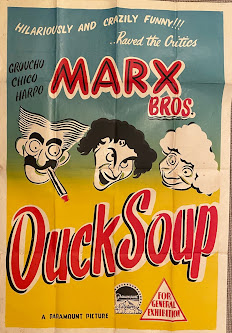By Dan Siegel, cross-posted from Huffington Post
The sweeping changes of the Arab Spring demonstrated to the world how
"the people without the guns are winning." So declares the new
documentary, How to Start a Revolution, a film that profiles the ideas and impact of Gene Sharp, a Nobel Peace Prize-nominated academic who can be described as the intellectual architect of non-violent, people-powered revolutions that have swept the globe over the past generation.
Nearly 30 years ago, I read Sharp's rather obscure but classic
three-volume series on civil disobedience in college. While being
inspired by the success of Gandhian nonviolence in rolling back the
British empire, I wondered how such theories could be applied against
iron-fisted regimes in the present age. In the fall of 1989, I was
fortunate to witness first-hand how unarmed civic revolutions swept away
authoritarian governments on the streets of Budapest, Prague and
Warsaw.
How to Start a Revolution documents how Gene Sharp's ideas and tactics have inspired and guided democratic activists, notably contained in his book From Dictatorship to Democracy, originally written in 1993 for Burma's freedom movement. The free downloadable book -- which offers 198 steps for overthrowing dictators -- has been translated into over 30 languages.
The documentary, by first-time Scottish director and journalist Ruaridh Arrow,
introduces us to the soft-spoken, 83-year-old Sharp in his modest
Boston brick row house carefully tending to his orchids. This constant
gardener plants the seeds of resistance and revolution, not knowing when
and where they will sprout, and cultivates a world where the oppressed
liberate themselves through peaceful means.
The film demonstrates that nonviolent resistance is anything but
passive, and when properly planned and deployed, it utilizes a strategic
mix of political social, psychological and economic weapons to
destabilize illegitimate regimes.
Sharp's theories, and the seven lessons of nonviolent struggle
highlighted in the documentary, are based on the core belief that all
states depend upon the obedience and consent of the people. This popular
cooperation and legitimacy can be withdrawn to undermine and expose the
fragile facade of power. In the end, dictators can only cling to their
monopoly of violence for so long.
How to Start a Revolution tells often overlooked stories and
case studies of successful civil disobedience over the past two
decades. Especially instructive is the Serbian example, which spotlights
how a youth-led civic movement led to the toppling of Slobodan
Milošević's regime in 2000 after it had tried to steal an election won
by the opposition coalition. Serbian activists trained and influenced by
Sharp in that struggle went on to train leaders of the civic revolts in
the Ukraine, Georgia, Kyrgyzstan and other parts of the world.
The film makes clear that the world's dictators seriously fear
nonviolent handbooks and practical civic tools spreading within their
societies. We see rather humorous attacks on Sharp by Iran's leaders,
who aired an animated propaganda film on state TV depicting the mild
octogenarian as a CIA mastermind in the White House coldly plotting the
demise of Tehran's reign. Venezuela's Hugo Chavez lumps Sharp and Bush
together as evil twins trying to pull the rug out from his rule.
It's all rather pitiful after viewing the modest two-room office of
the Albert Einstein Institution, the nonprofit based on the ground floor
of Sharp's home (Einstein wrote the forward to Sharp's first book). The
Institute has trouble getting foundation funding, even though it has
probably contributed more to support positive "regime change" than the
billions of U.S. tax dollars spent on countless weapon systems and
failed military adventures.
The film also features retired U.S. Army Colonel Bob Helvey, who has
applied Sharp's principles and trained leaders in other countries. We
are also moved by the personal story of a former Afghan refugee, Jamila
Raqib, who was inspired by the message of nonviolent change and joined
Sharp as his dedicated assistant 10 years ago.
Of course, Gene Sharp is no singular messiah of nonviolent
revolution. As the film makes clear, Sharp does not presume to know the
local contexts where civil disobedience is being applied, or seek to
take credit for its success. He simply offers a powerful set of
principles and tools for local activists to adapt and apply to their own
circumstances. It is the brave souls on the ground demanding change who
make history.
How to Start a Revolution could have been strengthened by
more historical context, pointing out the history of nonviolent
resistance from the underground railroad to Gandhi's Salt March to the
civil rights movement. It could have also demonstrated how violent
revolution and change throughout history has often served to reproduce
undemocratic and authoritarian regimes.
However, the film was made on a shoestring, tapping small-dollar online donations on Kickstarter
to complete its production. It is a vital conversation starter and
educational tool for a world awash in violence and driven by an outmoded
mindset that power only comes through the barrel of a gun.
The film ends on an upbeat note, as we watch a Syrian freedom
activist make a sojourn to Boston to get advice from Gene Sharp. We see
how leaders today have advanced nonviolent change strategies utilizing
social media tools and digital cameras to document and expose government
repression and tyranny.
The release of How to Start a Revolution this fall is even
more relevant and timely as the Occupy movement peacefully seeks
democratic change and economic reform here in the United States. Those
marching across America, and throughout the world today, are better
equipped to create the world they want because of the long, quiet march
of Gene Sharp, a man aptly called the Machiavelli of nonviolence.
Subscribe to:
Post Comments
(
Atom
)







0 comments :
Post a Comment